We’re in Vicksburg with plans to visit the National Military Park - after breakfast. Now, Gary and I like to eat at small mom and pop breakfast restaurants or diners but I was really unsuccessful at finding any in Vicksburg. I could find Waffle House and Cracker Barrel and Bella’s in one of the casinos. But no mom and pops anywhere to be found. Bella's menu was promising but, being in a casino was really smoky. The reviews of the Waffle House were not the greatest and that left Cracker Barrel.
And, there we were in Cracker Barrel looking at the menu. My favorite is scrambled Eggbeaters, hash browns and dry whole wheat toast (on which I like Strawberry jam). I finally ordered Eggbeaters and biscuits while Gary ordered the special with sausage, hash brown casserole, grits and gravy. He told the waitress he didn’t want the gravy so she offered a double order of grits. Me? Because I had mentioned whole wheat toast, I got Eggbeaters and 2 pieces of sourdough toast. Gary looked at his grits and decided that he needed to rethink this ordering. But, we’ll get the hang of it.
Funny thing - we stopped in at the local Visitor Center and asked the volunteer where we might find a mom and pop breakfast restaurant. She said ‘We don’t eat breakfast in the South. We eat a heavy, early lunch.’ Aha, now we know. At least we’ve found two really good donut shop chains: Shipley’s and Daylight. Fresh, lots of variety and absolutely yummy.
Off to Vicksburg. As an American History teacher for years, I’ve always wanted to tour the Civil War Battlefields and I’m enjoying this journey a lot.
Mighty Mississippi, Father of Waters - whatever you want to call it, both the Confederacy and the Union called it vital. The Union wanted to control it for two reasons: first wanted to split the Confederacy in two and prevent the states of Texas, Louisiana and Arkansas from moving troops, armament and goods to the eastern Confederate states. Secondly, by controlling the Mississippi, they could move the farm goods from the upper Midwest to market in New Orleans and elsewhere. The Confederacy wanted to control it for the same two reasons: wanting to move men, armaments and goods to the eastern Confederate states and to move their produce to New Orleans.
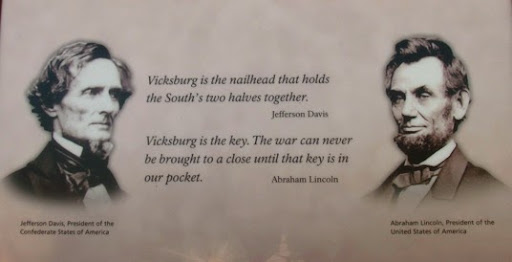
By 1863, the Union controlled all of the Mississippi but a small section around Vicksburg. Now Vicksburg was on 200’ high bluffs on the eastern side of the river surrounded by bayous, swamps, . On the northwest and south are a maze of swampy bayous, steep ravines and 200’ bluffs. Difficult to attack but easy to defend. Grant had tried several approaches, he tried moving his army through those bayous and he even tried rechanneling the Mississippi. None of these approaches worked. Critics suggested that his previous successes had been flukes, that he really was a drunk just like some rumors said.
Finally he had such a ridiculous plan that even General Sherman, a risk taker himself, thought impossible. He wanted to circle south around Vicksburg and attack from the east.
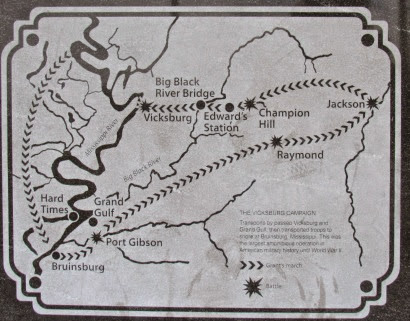
Meanwhile, he wanted the navy to sail down the Mississippi under the guns of the Confederates, run this gauntlet and meet Grant south of the Mississippi with supplies and the boats with which Grant and his army could cross the Mississippi to the east.

Holy toledo, it all worked. And Grant was in Jackson, marching west to attack Vicksburg from the East. But what about the line of Confederate armaments, redoubts, trenches, artillery that Grant had to cross? After a few battles and a few futile attacks down into the ravines (in one case, the Union soldiers got up to the high fortifications built by the Confederates only to find that the ladders they had carried down into the ravines and up the fortifications were too short) up the hills into fire by the Confederates, he decided to lay siege to Vicksburg and thus began 47 days.
The citizens listened to daily and nightly barrages of artillery and dug caves into the bluffs to live in for 47 days. Damp, musty and cold but at least they didn’t worry about bombs hitting their caves. In a siege, the enemy can’t get in but neither can food, clothing, weapons, ammunition or medical supplies. Soldiers were put on half rations then half rations again. Lacking coffee, they drank a beverage made up of sweet potatoes, blackberry leaves and sassafras. No flour? How about ground peas and cornmeal? No meat, how about cats, dogs, mules and horses? Even rats began to disappear from the streets. Finally, Pemberton, the Vicksburg Commander, surrendered on July 4, 1863 and Vicksburg and the Mississippi was held by the Union.
Here’s a 1902 picture of a cave that was occupied by the Lewis family from May 18 - July 4. In front of it is T.E. Lewis who was 14 at the time of the siege. This was left as an example of cave life during the siege.
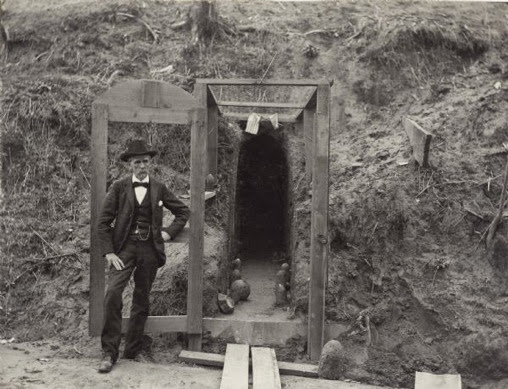
It was in the 70’s, sunny and we needed our walk so we decided to walk the battlefield. Nothing like walking the battle field to see how the average soldier viewed it. We could look down into the ravines and up the battlements and imagine how hard it would be to storm these in full wool uniform with gun, bayonet and cartridge case, in the hot summer Vicksburg sun. Never mind that you were being shot at by expert marksmen and looking up into the barrel of a cannon. But, our imaginations are not this good.
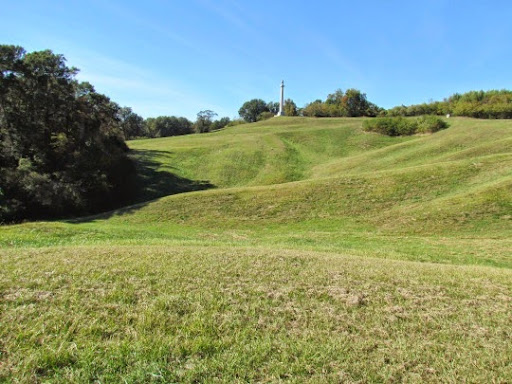
This is the most decorated and most realistic battlefield. There are 150 artillery pieces, restored redoubts, rifle-pits, battery positions and deep trenches. There are even a few examples of the z-shaped trenches Union soldiers dug to get close to the Confederate fortifications. In addition there are 1350 monuments, busts, markers, tablets, relief portraits and State memorials. Everywhere you look is a marker: blue for the Union and red for the Confederacy to show how where each group was.
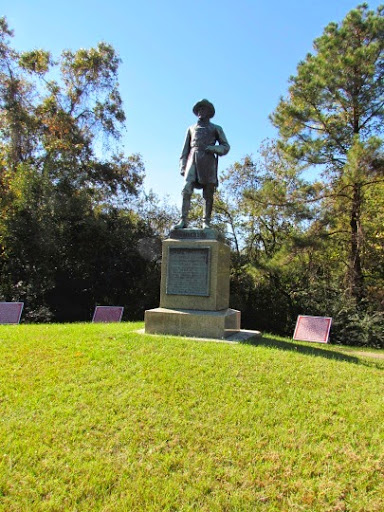
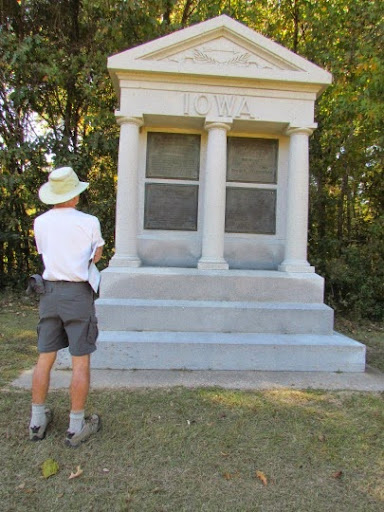
Civil War soldiers met in a 1917 reunion and, since so many of them were alive, they could pinpoint just where they were and thus the battlefield is an extremely accurate portrayal of all positions. Artillery pieces are where they were located, redoubts and fortifications, though eroded by weather are where they were and trenches dug by the Union are still evident. Here are some Union soldiers digging an approach. Note the wooden roll which protected them as they dug.
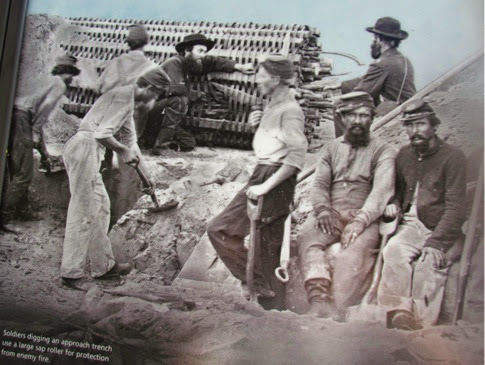
Here I am in what remains of a zig-zag trench that Union soldiers dug up towards the Confederate fortifications.
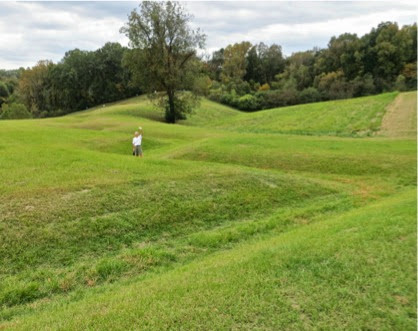
After our walk, we drove the rest of the battlefield and stopped at the ironclad, Cairo, sunk in the Yazoo River north of the city in December 1862. It was the first vessel in naval history to be detonated by an electronic mine. When it sank, the crew managed to save only themselves and what they were carrying though no lives were lost. Raised in 1964, it is a treasure trove of wartime artifacts: weaponry, tools, rigging, hardware, tableware (officers had china, seamen had tin), bottles, uniform parts, personal items, clothing and other personal belongings.
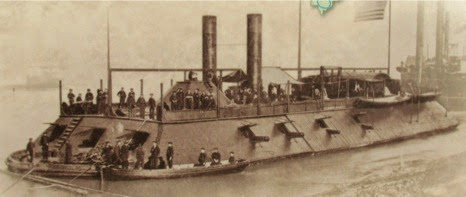
Look how well they have restored it. You can see the original wood underneath and sections resembling the original above with the cannons.
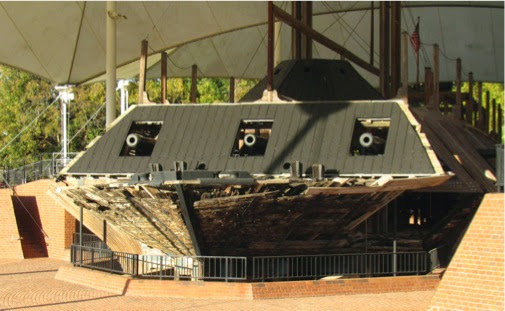
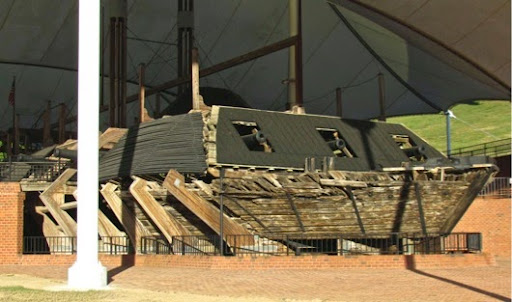
Here is an example of some of the artifacts that they were able to recover. Shoes - they sure don’t look as comfortable or as sturdy as today’s shoes.
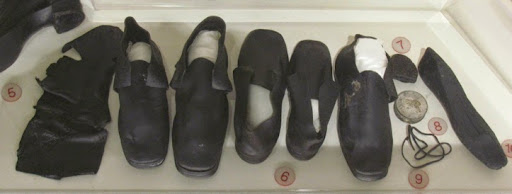
Neat day but the sun is sinking and it’s time to head back to the RV.

Great...
ReplyDeletequickbooks payroll subscription